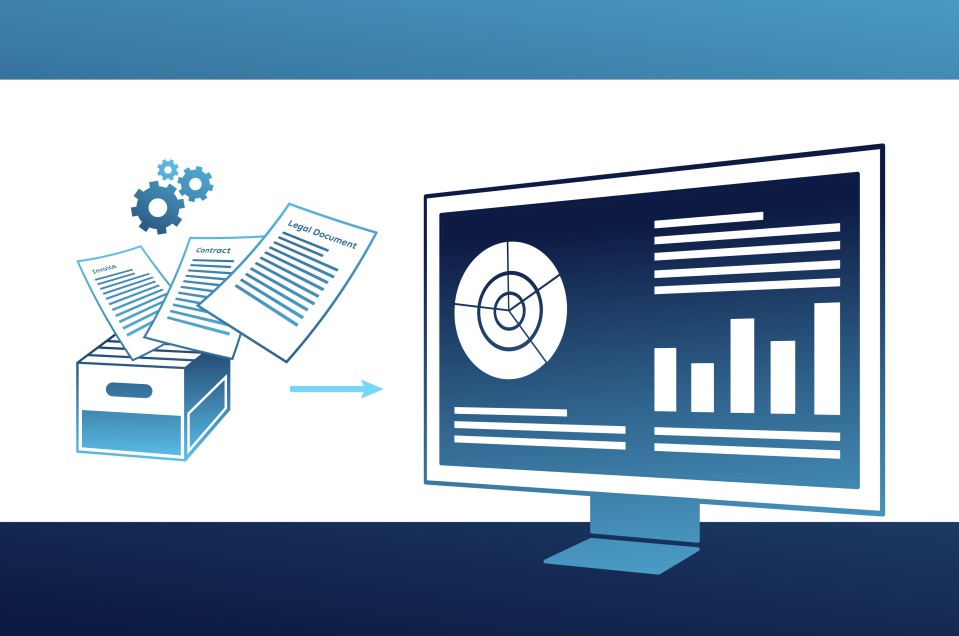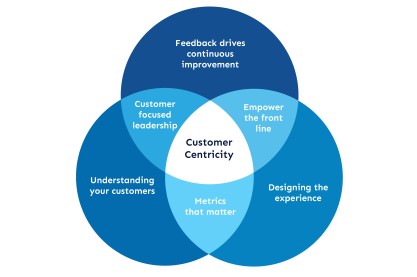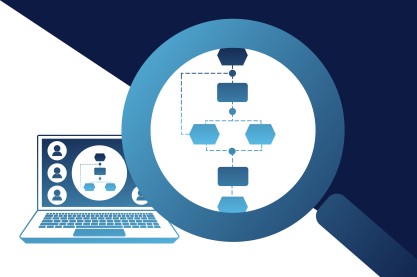Total Quality Manage...
18411 | 6 Apr 2023

Today's businesses are burdened with difficult-to-use business systems that complicate processes and hinder operations. Business processes are supposed to be simple but are often complicated by organizational structure, complex systems and inefficient development processes. Within organizations, there is thus a need to rationalize business processes to remain relevant in the market. By adopting new technologies and digitizing their operations, businesses can improve their competitiveness, reduce costs, increase productivity, and improve customer experience.
Business systems are essential because they give an organization a framework within which they work and can profoundly affect efficiency, effectiveness and productivity. The business process is the basis of the work organization of every company. It is a set of different activities or tasks that are carried out in a certain order. The organization's specific resources are used to implement processes to fulfill the mission or the purpose of the organization's existence. Because each business process is defined by parameters such as production quality, speed, costs, added value etc., it is logical that they are the basis of achieving a competitive advantage. It is crucial to monitor and analyze them to eliminate the possible deficiencies in their operation before they threaten the company's survival. The business process is a structured, analytical, cross-functional set of activities that requires continuous improvement. It represents a recurring stream of activities with a clearly defined process start and process end. At more or less constant intervals, it creates value for customers.
Competitive trends force organizations to become more efficient every day. Business organizations worldwide are experiencing a high rate of competitiveness and uncertainty in all business matters. As a result, most companies desperately feel the immediate and drastic need to change structures, processes, strategies and people to remain relevant in a saturated market.
The resulting organization can be solved by reorganizing or re-structuring of business processes, which are renovated in such a way that the renovation does not take into account limitations of the execution of processes due to existing structures and surviving patterns. It is most effective for organizations to adapt their structures to processes and not the other way around. We are thinking of making changes where we increase the orderliness of the system by introducing different methods and implementing new technologies and approaches. Increasing the level of the orderliness of the system or reduction of system entropy can be done with the help of (Kern, 2020):
Changes in business processes are often the main element of developing and implementing a new strategy. Organizations need to analyze the current established processes to identify points where the goals and measures of the process are not aligned with the organization's strategy. The reason may appear because the processes differ from the established initial processes or because the set strategy is not operationally feasible. Consequently, organizations often change the processes to make them workable, and over time the strategy also changes to accommodate it.
There are several approaches and methodologies for process improvement of the system:
Different authors use different terms to define the above-mentioned system process improvement approaches, but all authors have no final designation agreement. Some authors use specific approaches as synonyms belonging to the field of BPM. For the main part, the approaches are separated according to different degrees of change. Organizations need to identify which approach to use. Business process reengineering is typically carried out to identify and remove organizational barriers that impede the flow of processes in order to create drastic changes, while the optimization of business processes is more discrete in its approach. Improving business processes involves changing a few rules to achieve immediate efficiency, while business process reengineering is a limitless approach that brings seismic changes with an eye on the bigger picture. Improving business processes identifies bottlenecks in processes and recommends changes. Business process reengineering, in contrast, discards existing rules and re-runs the entire process.
Many organizations are aware of the fact that long-term success requires entering the digital world. Companies can also use digital transformation as an additional approach to process improvement of the system. Organizations are often confused about terminology and new processes that occur with the transition to the digital world. As companies from all industries must adapt to a technology-driven world, it is important to understand the difference between three terms that have an immense impact on the future of all companies:
a) Digitization is the process of converting information from physical to digital form, which includes the use of modern technologies. Information is displayed with binary data during digitization. These are separated into data units (bits), which are primarily in multi-bit groups, which we call bytes. Said computers or devices process binary data with computing capabilities, such as digital cameras, etc. Digitization is an act that enables digitization to take place.
Example: Scanning a physical document that we save in PDF format on the computer.
b) Digitalization is defined as the development and use of digital and artificial technologies and artificial intelligence to ensure and create value and improve business processes, consistent with migrating information to the digital world. Digitalization processes, stores, and transmits information through digital circuits, equipment, and networks. It facilitates access, storage and information sharing. Gartner (2020) says that digitalization is the use, management and implementation of digital technologies in business for monitoring the business model with which we provide new business opportunities that create added value. It is an actual process of transition to a digital company.
Example: Scanning a physical document that we save in PDF format on the computer, but additionally upload it to the cloud to have access to it anywhere and anytime.
c) Digital transformation is not just a way for a company to stay competitive. We could say it is a fundamental condition for success in the 21st century. It is a requirement that affects all elements of the organization and business, from the data center to customer relations. Basically, digital transformation is the impact caused by the digitalization process. Digital transformation is based on the business model and monetization and the integration of strategies into operations based on digitization and digitalization.

Figure 1: Relationship between concepts
Figure 1 explains the confusion between digitization, digitalization and digital transformation, which is otherwise understandable, but for progress, the importance of knowing each term is crucial. Digitization is the process of converting information from physical to digital form. When we use this process to improve business processes, this is called digitalization. The results of this process are called digital transformation.
Technology has completely changed the way we live and the changes will be even more incredible in the coming years. Although the future of technology is uncertain and unpredictable, digital technology will certainly always be a part of digital information transmission. The main changes we noticed in the recent decades in the field of digital technology are the speed at which this process works and that it previously happened in pulses of electricity and not with binary code.
Let's look at the example of telephones. The technology change is not only shown by apparent changes in size and capacity but also by the speed and clarity of the process operation. It is known that digital technology comprises work processes, principles and standards applicable to technology standards and improves the overall level of creativity, along with the distribution process of information.
Evolution ensures that the species survives the changing conditions of the world. Similarly, digital development ensures the company can sail through all the technological changes worldwide. Continuous innovation and development help improve business results. Digital business transformation can remove all inabilities and result in more growth opportunities. It is the integration of digital technology into all business areas which significantly changes the way of operation and brings value to customers. It also includes cultural changes that require organizations to challenge their status quo, experiment and embrace the coming changes.
While some companies see digital transformation as a disruption, it should actually be viewed as a golden opportunity to add value to the organization. Digital transformations bring multi-layered benefits to the company. There are a number of factors that lead to digital changes, such as consumer behavior, market conditions, evolving economy, regulatory laws, competition and much more. Because digital technologies are dramatically transforming industry after industry, many companies are pursuing large-scale changes to take advantage of these trends or simply to keep up with their competitors. Digital transformation is not just about implementing digital technologies. The goal of introducing digital transformation should be a fundamental change in the way the company operates.
What are your thoughts on the subject above? Feel free to post a comment or start a discussion.


Leave A Comment